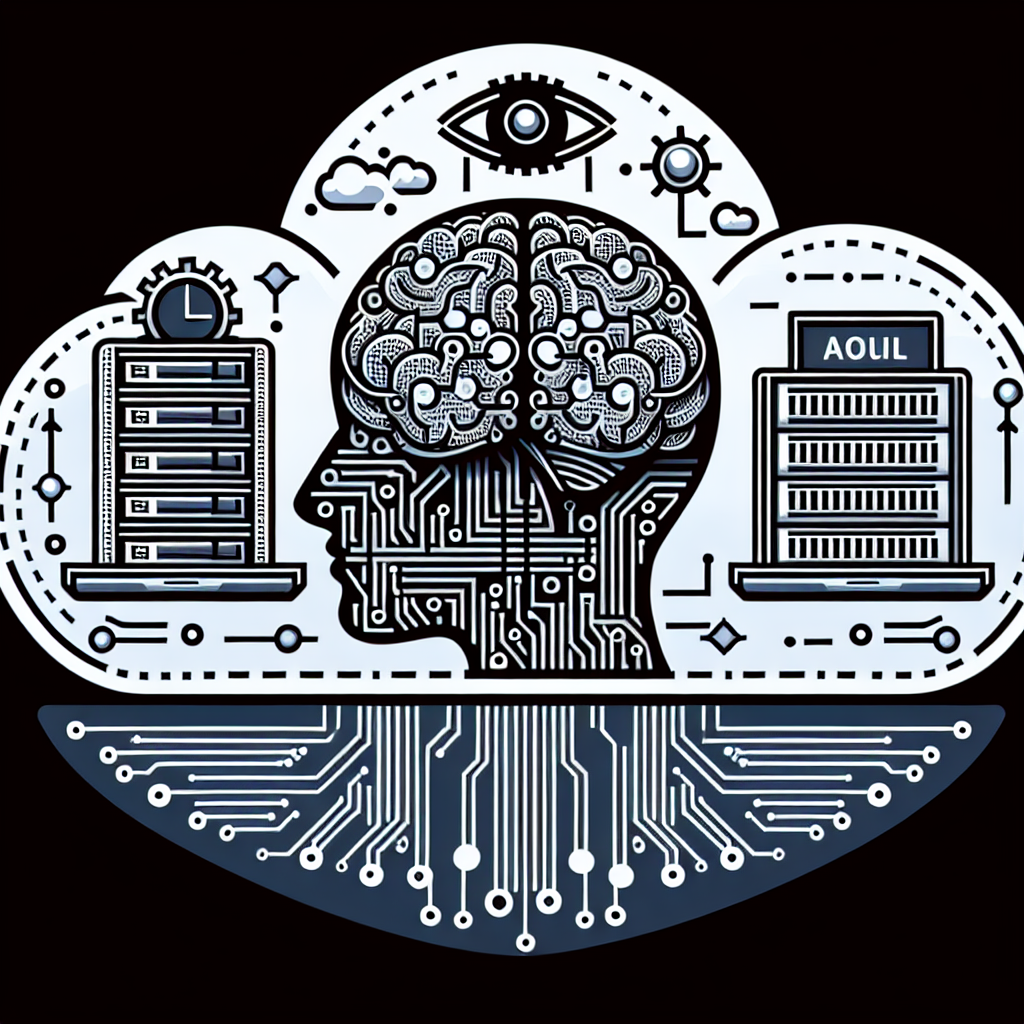AI for Real-Time Cloud Monitoring
In the era of digital transformation, cloud computing has become an essential part of businesses worldwide. The ability to store, manage, and access data in the cloud has revolutionized the way organizations operate, enabling them to scale resources, improve efficiency, and enhance collaboration. However, with the increasing reliance on cloud services, monitoring and managing the performance and security of cloud environments has become more challenging than ever.
Real-time cloud monitoring is crucial for ensuring the availability, performance, and security of cloud-based applications and services. Traditional monitoring tools and methods are no longer sufficient to meet the demands of modern cloud environments, which are dynamic, complex, and constantly evolving. This is where artificial intelligence (AI) comes into play.
AI-powered real-time cloud monitoring solutions leverage machine learning algorithms to analyze vast amounts of data, identify patterns, detect anomalies, and predict potential issues before they impact performance or security. By harnessing the power of AI, organizations can gain deeper insights into their cloud environments, automate monitoring tasks, and proactively address issues in real-time.
Benefits of AI for Real-Time Cloud Monitoring
1. Improved Performance: AI algorithms can analyze performance metrics in real-time and identify patterns that indicate potential performance issues. By proactively addressing these issues, organizations can optimize the performance of their cloud environments and ensure a seamless user experience.
2. Enhanced Security: AI-powered monitoring tools can detect anomalies and suspicious activities that may indicate a security breach. By continuously monitoring for security threats, organizations can quickly respond to incidents and prevent data breaches or cyber-attacks.
3. Predictive Maintenance: AI algorithms can analyze historical data and predict potential issues before they occur. By identifying patterns and trends, organizations can proactively address maintenance tasks, minimize downtime, and optimize resource utilization.
4. Cost Optimization: AI-powered monitoring tools can analyze resource utilization and identify opportunities for cost optimization. By optimizing resource allocation, organizations can reduce cloud costs and improve ROI.
5. Scalability: AI-powered monitoring solutions can scale to meet the demands of dynamic cloud environments. By automatically adjusting monitoring capabilities based on workload and resource requirements, organizations can ensure continuous monitoring without impacting performance.
Challenges of AI for Real-Time Cloud Monitoring
While AI offers many benefits for real-time cloud monitoring, there are also challenges that organizations must address to fully leverage its potential.
1. Data Complexity: Cloud environments generate vast amounts of data, including performance metrics, logs, and events. Analyzing this data in real-time requires sophisticated AI algorithms and infrastructure to handle the volume and variety of data.
2. Model Training: AI algorithms require training data to learn patterns and detect anomalies. Organizations must invest time and resources to train AI models and ensure they are accurate and reliable.
3. Integration: Integrating AI-powered monitoring tools with existing cloud environments and systems can be complex. Organizations must ensure seamless integration to avoid disruptions and ensure data accuracy.
4. Security and Privacy: AI-powered monitoring tools may access sensitive data stored in the cloud. Organizations must implement robust security measures to protect data privacy and comply with regulatory requirements.
FAQs
Q: What is real-time cloud monitoring?
A: Real-time cloud monitoring is the process of continuously monitoring the performance, availability, and security of cloud-based applications and services in real-time. This enables organizations to proactively identify and address issues before they impact performance or security.
Q: How does AI improve real-time cloud monitoring?
A: AI-powered monitoring tools leverage machine learning algorithms to analyze vast amounts of data, identify patterns, detect anomalies, and predict potential issues. By automating monitoring tasks and providing deeper insights into cloud environments, AI improves the efficiency and effectiveness of real-time cloud monitoring.
Q: What are the benefits of AI for real-time cloud monitoring?
A: AI offers several benefits for real-time cloud monitoring, including improved performance, enhanced security, predictive maintenance, cost optimization, and scalability. By leveraging AI algorithms, organizations can proactively address issues, optimize resource utilization, and ensure continuous monitoring of cloud environments.
Q: What are the challenges of AI for real-time cloud monitoring?
A: While AI offers many benefits for real-time cloud monitoring, there are challenges that organizations must address, including data complexity, model training, integration, and security and privacy. Organizations must invest time and resources to overcome these challenges and fully leverage the potential of AI for real-time cloud monitoring.
In conclusion, AI-powered real-time cloud monitoring is essential for organizations to ensure the availability, performance, and security of their cloud environments. By leveraging AI algorithms, organizations can gain deeper insights, automate monitoring tasks, and proactively address issues in real-time. While there are challenges to overcome, the benefits of AI for real-time cloud monitoring far outweigh the challenges, making it a critical component of modern cloud management.

